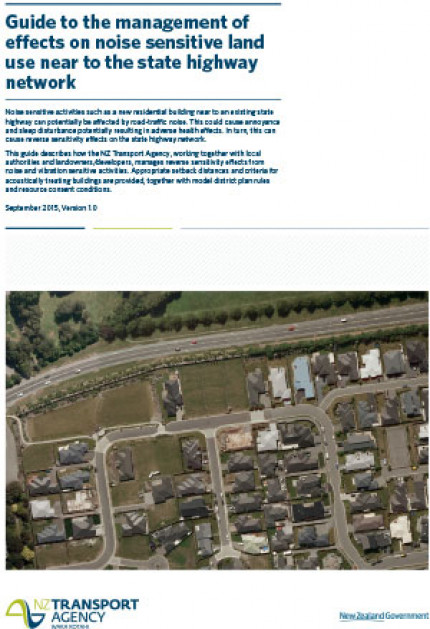Published: September 2015 | Category: Planning, design, funding, building, maintenance of the transport network , Guidance for specialists | Audiences: General, Road traffic engineers & consultants
Noise sensitive activities such as a new residential building near to an existing state highway can potentially be affected by road-traffic noise. This could cause annoyance and sleep disturbance potentially resulting in adverse health effects. In turn, this can cause reverse sensitivity effects on the state highway network.
This guide describes how the NZ Transport Agency, working together with local authorities and landowners/developers, manages reverse sensitivity effects from noise and vibration sensitive activities. Appropriate setback distances and criteria for acoustically treating buildings are provided, together with model district plan rules and resource consent conditions.
Keywords: noise, reverse sensitivity, noise sensitive activity, manage road traffic noise, acoustics, sleep disturbance, new developments, altered buildings, noise barriers, buffer area, effects area, expressway, state highway.
